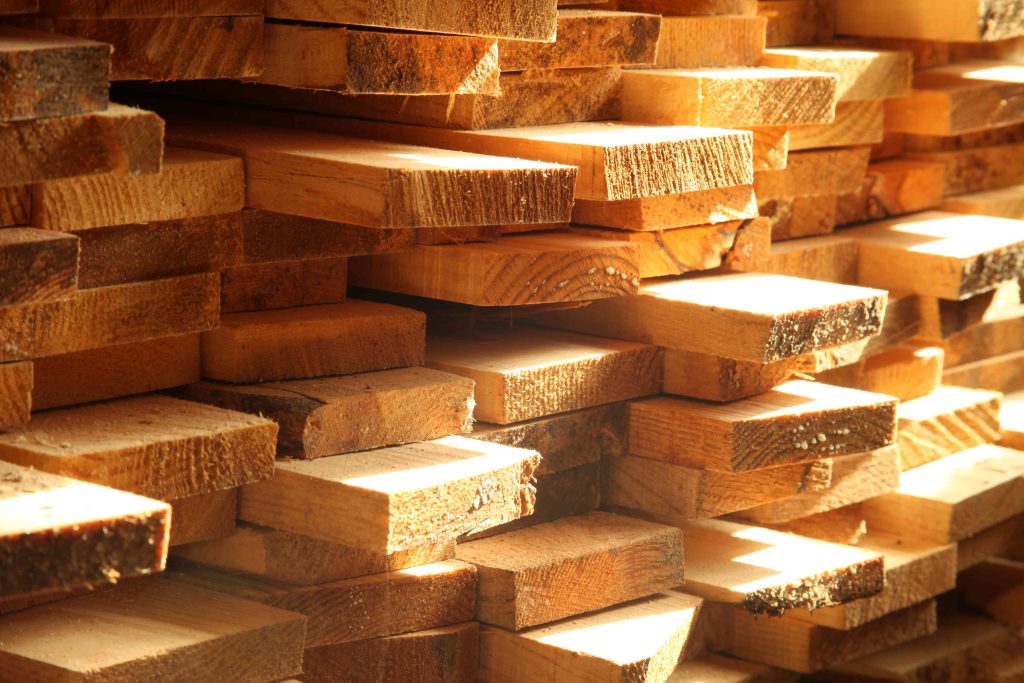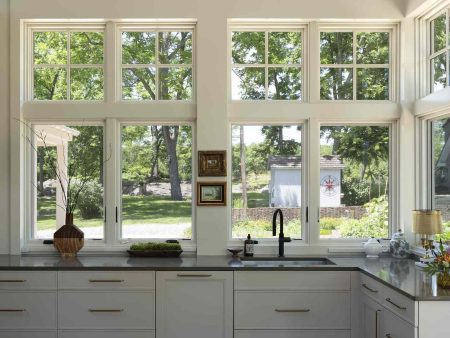Dimensional lumber is the structural element responsible for nearly every type of residential home being built today. There are two types of sizes for dimensional lumber: nominal and actual. A board measured before it has been dried and planed on all four sides has a nominal size. A board measured after it’s been dried and surfaced has an actual, or final size. This is very important to know when working on projects that need precise measurements. Read on to learn more about how dimensional lumber sizes work.
Dimensional Lumber
Dimensional lumber is wood lumber that is cut to pre-defined, standard sizes. Dimensional lumber sizes (such as two-by-four or 2×4) refer to the depth and width of the material, not to its length.
Dimensional Lumber Basics
Dimensional lumber is sawn, planed, and sometimes further smoothed to make it immediately ready for many applications. It’s the most common type of lumber used for building because its consistent sizing allows builders to use it interchangeably throughout the home.
Standardization also means that builders or do-it-yourselfers throughout the entire country are using lumber that is sized the same way. A 2×4 with an actual measurement of 1 1/2 inches by 3 1/2 inches in one state will be exactly the same as a 2×4 across the country. The modern home would not be possible without dimensional lumber.
Dimensional Lumber and Modern Building
As early as the 1870s, lumberyards began to use the now-familiar 2×4 or 2×6 designations for dimensional lumber. But it wasn’t until the 1920s that the term “dimensional lumber” came into popular use to distinguish lumber cut to pre-determined sizes from other types of wood, such as corded wood for fireplaces.
During this period, the building industry sought to control costs and minimize waste by developing standard sizes and grades for building timber. Most significant, though, was the rapid change from the post-and-beam style of house framing to the more efficient balloon framing style.
For the average do-it-yourselfer, most long, thin lumber that will be used for building is considered to be dimensional lumber. Other types of lumber, such as plywood and other sheet goods, are offered in prescribed standard sizes but are not referred to as dimensional lumber.
Nominal Size vs. Actual Size Dimensional Lumber
All dimensional lumber has both nominal and actual dimensions. The most familiar type of dimensional lumber is the 2×4. Due to the thickness of the saw blade and additional milling processes, the resultant 2×4 product is not 2 inches by 4 inches. Instead, it is 1 1/2 inches by 3 1/2 inches.
It can be difficult to remember the difference between nominal and actual dimensions. Even experienced woodworkers or do-it-yourselfers may find themselves struggling to remember the true width of a 2×10.
Nominal Lumber Sizes
Nominal is the giveaway and an easy way to remember this one. Nominal means name, or in this sense, existing in name only.
So, a 2×4 that in the physical, real sense is 1 1/2 inches by 3 1/2 inches, is only in name 2 inches by 4 inches. In essence, we are saying we have applied a certain nickname to the board, but this nickname does not accurately describe the board’s physical sense.
Actual Lumber Sizes
Actual size is as actual and real as if you were using a tape measure or a straight edge to measure the dimensions of the stock. Actual size is anywhere from 1/4 inch to 3/4 inch less than nominal size.
Common Dimensional Lumber Sizes
Softwoods such as Douglas fir, spruce, or Hem-Fir (a mixture of Western Hemlock and Amabilis Fir) used for building framing have the following nominal and actual dimensions. These dimensions do not apply to laminated veneer lumber boards, hardwoods, or floorboards.
| Dimensional Lumber: Nominal Size vs. Actual Size | |
|---|---|
| Nominal Size | Actual Size |
| Two-by-four or 2 x 4 | 1 1/2 inches x 3 1/2 inches |
| Two-by-six or 2 x 6 | 1 1/2 inches x 5 1/2 inches |
| Two-by-eight or 2 x 8 | 1 1/2 inches x 7 1/4 inches |
| Two-by-ten or 2 x 10 | 1 1/2 inches x 9 1/4 inches |
| One-by-two or 1 x 2 | 3/4-inch x 1 1/2 inches |
| One-by-three or 1 x 3 | 3/4-inch x 2 1/2 inches |
| One-by-four or 1 x 4 | 3/4-inch x 3 1/2 inches |
Dimensional Lumber Lengths
In relation to the term dimensional lumber, dimensions only refer to the width and depth. Thus, a dimensional 2×4 board can be 12 feet long, for example, but that length is not figured into the dimensions. The length is treated separately.
Lengths typically are shown as the last number. A typical dimensional lumber designation might read as such: “2 in. x 4 in. x 8 ft.”
This can be confusing because it is a mixture of nominal and actual sizes. The first two numbers (2 inches and 4 inches) are nominal widths and depths for the lumber. As stated earlier, their actual sizes are 1 1/2 inches and 3 1/2 inches.
Yet lengths of dimensional stock are always expressed as actual sizes. So, this example board’s actual length is 8 feet. When you take that “2 in. x 4 in. x 8 ft.” board home, it will actually measure out to be 1 1/2 inches by 3 1/2 inches by 8 feet.
When Nominal and Actual Dimensions Match
In rare cases, the wood’s nominal dimensions and actual dimensions are the same.
Anyone tearing down an especially old home may have encountered this. The wood feels somewhat thicker, but it’s not until a tape measure is applied that this two-by-four proves to actually be 2 inches by 4 inches.
Actual dimensional sizes have shifted over the years. Many older homes have nominal dimension 2x4s that are actually 2 inches by 4 inches.
While it’s tempting to want to reuse this stock for other applications around the house, it can be difficult, unless those other areas also use the older type.
If you tried to repair or sister a newer wall system (built with modern-day 2x4s) with that older stud, portions of the older stud would protrude, making it impossible to hang the drywall. The older stud would either need to be milled down to today’s dimensions or used in another area of the house that still uses the older type.
Read the full article here









